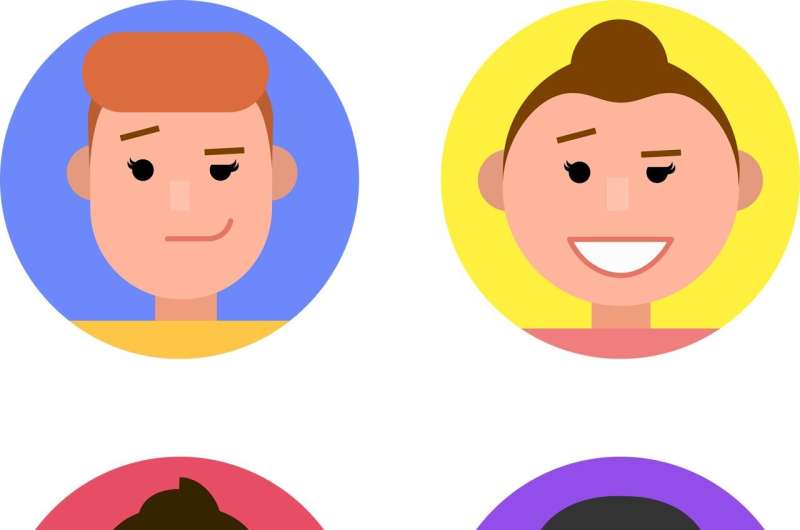Who do you think you are? What does your avatar say about you?

When using social virtual reality, people hide behind avatars. But is it really hiding or is it a way to express our new digital selves? A new Trinity study published in the Journal of Digital Social Research suggests it is both—experimenting with one's avatar can be a creative act of self-representation, but also one of conformity or escapism.
"Any experimenting is dictated by the limits of technology, an app, the involved community, or the user themselves, but it still represents a way to feel better or safer in digital worlds that now replace more and more physical-world activities," says Trinity's Dr. Kata Szita, who led the research.
"And the accelerating trend for engagement in virtual settings was of course further fueled by the physical isolation many people met during the COVID-19 pandemic, making this research all the more pertinent."
Dr. Szita, Marie Skłodowska-Curie Research Fellow in the Trinity Long Room Hub Arts and Humanities Research Institute and the ADAPT Center of Excellence for AI-Driven Digital Content Technology hosted by Trinity, has set out a new framework based on her findings that combines intersectionality and social identity theory.
Intersectionality addresses that a combination (intersection) of identities defines one's inclusion or discrimination in certain social contexts, whereas social identity theory observes social dynamics via belonging to groups, and explains that one's idea of themselves is shaped by their membership in these groups.
"Like in the 'real' world, people have various different identities that define their social interactions—whether that be as a female elf warrior in a massive multiplayer online game, or a professional representation of themself in the metaverse," adds Dr. Szita.
"Intersectionality has its base in the black feminist movements in the 1970s and highlights that black women can be subject to systematic oppression because they are black, and because they are women. This is true for other intersecting identities, and it is just as real in social virtuality reality settings as it is in day-to-day life."
"Avatars can also represent intersecting characteristics, so users may be similarly subject to privileges or biases based on two or more demographic markers. But what's interesting here is the dimension of fictionality: that these avatars, again, may be different from how the users behind them look or identify themselves in person—this is why it is important to approach the question of VR identities from the other side, from the perspective of social groups."
When choosing an avatar, a user may need to adjust their visible or recognizable representation to whatever is available: some social VR applications only support a binary system of genders and stereotypical body representations to express their age, for example. At other times, one may want to look in a certain way to conform to the community they interact with. Either way, one's digital body affects social interactions and whether they fit or are left out of certain social groups.
"Doing this research was important as digital bodies serve as the base for millions of social interactions in virtual settings each day, but they don't necessarily mirror the identities and characteristics of the user behind them. This requires a different view than when we observe physical-world social interactions.
"The next time you choose a character when playing a video game or connect with others around the globe in a virtual setting I'd encourage you to think about why you make the choices you do and consider what impact they may have on your interactions with others."
More information: Kata Szita, A Virtual Safe Space?, Journal of Digital Social Research (2022). DOI: 10.33621/jdsr.v4i3.91
Provided by Trinity College Dublin





















